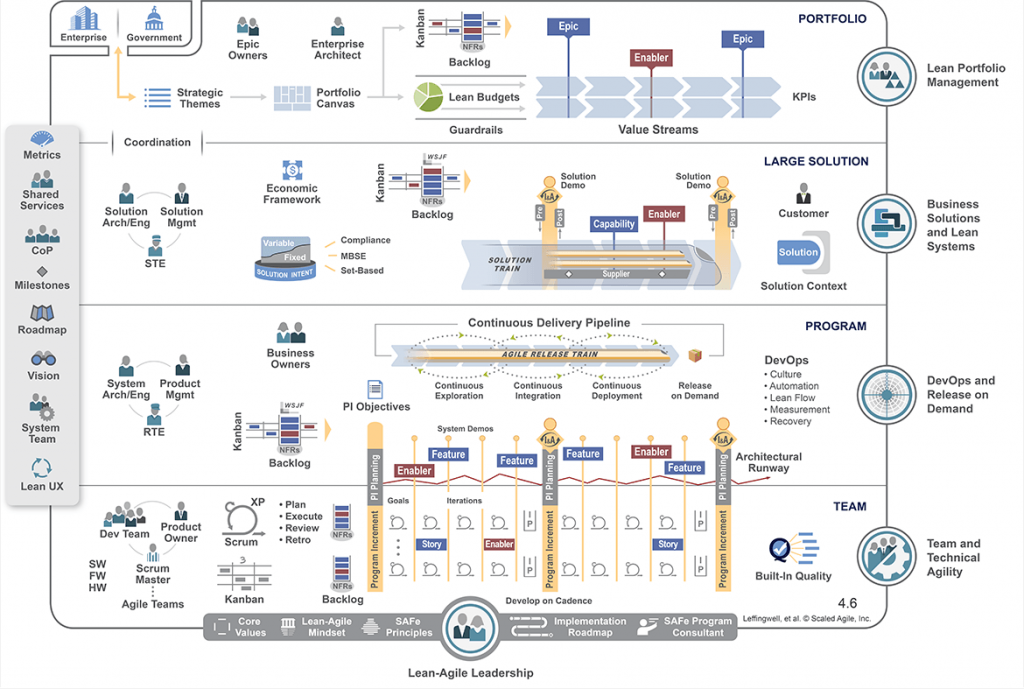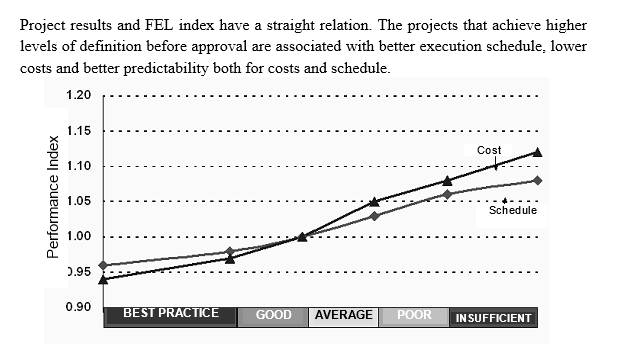Project Management Methodologies
AGILE
On average, large organizations have been using AGILE in large projects for five years. Many large organizations are therefore still at a stage of experimental implementation.
Because many large organizations are currently experimenting with AGILE, the results are somewhat paradoxical in that some features are common to almost all observations, while others show extreme variability. The common features include use of SCRUM methodology and AGILE coaches..
One element that is relatively clear is that self-organizing SCRUM development teams have a major role in the detailed planning and monitoring of project execution and that project managers are, therefore, devoting less effort to this type of activity.
The advantages of using AGILE are a working environment that supports creativity and productivity, rapid adaptation to change and value for the customers, because of better identification of needs and priorities and faster multiple deliveries of functionalities at certain types of projects in certain context.
The main principles included in Agile are:

Organizations might have very different reasons to implement AGILE. For example their goal might be to improve quality, better respond to change , decrease lead time, reduce cost, or ensure that the product delivered corresponds better to what the customers want.
The most commonly used Framework is the Scaled Agile.

TRADITIONAL: FEL

It is a characteristic feature of the resource industry that no two orebodies – and hence no two development projects – are the same.
Therefore, these technical issues have to be addressed to a greater or lesser extent in evaluating any resource project’s development potential.

Several surveys on capital projects have shown that the success in implementing competitive projects is based on four attributes: project team, technology, VIPs and FEL. Among them, FEL is the crucial factor for project success.
Fundamental background for competitiveness on capital projects Governance should be thought of as the rules and mechanisms for directing and controlling investment in capital projects.
From assessment and benchmarking of hundreds of project portfolios, it is clear that gatekeeping, as the final output of an organization’s governance process, is the key driver of overall portfolio performance.
The main purpose of the use of FEL (front-front-end-loading) is to determine whether a development opportunity makes good business sense, not just whether it is technically possible.
The FEL process must therefore demonstrate that not only have the technical issues been satisfactorily addressed, but also that the broader commercial, economic and social issues have been considered in the development of a comprehensive business plan, which includes an assessment of the risk-reward profile of the proposed development.
FEL is the process by which the company achieves a detailed definition of a given project during the planning phase, with the purpose of minimizing the risks and maximizing the investor’s return. It is an efficient instrument for executive decision driving predictability, accountability, transparency and competitiveness.

FEL methodology divides the development phase into three different phases: FEL1 – Business Analysis, FEL2 – Trade off Analysis and FEL3 – Project Implementation Plan and introduces stage gates in threestages (Gate 01, Gate 02 and Gate 03). The gates work as clear transition points in which the project, after evaluated, may go to the next phase, return for better definition or cancelled.
Project life cycle with gates
Project results and FEL index have a straight relation. The projects that achieve higher levels of definition before approval are associated with better execution schedule, lower costs and better predictability both for costs and schedule.

Influence of FEL definition level in project cost and schedule compared to industry average (1.0)
Unfortunately, part of capital projects fail to achieve the proposed value promised at authorization. Future cash flows (or benefits) are often less than expected, capital costs are higher, and schedules are longer.
Based on learnings from governance research, an ineffective or undermined governance process often have some (if not all) of the following symptoms:
1. The project sponsor (the person accountable for the economic [or otherwise] benefits of the project) is the ‘gatekeeper’
2. Project process is bypassed, or a considerable portion of the project’s execute funding is ‘pre-approved’ (considered authorized)
3. Scope is dropped (or added) after Gate 2.
4. Deliverables and answers required to make a decision on the feasibility of an opportunity progressing are waived till the next phase
5. Deliverables are used isolated only to complete check list. This brings a false maturity level of the project and issues ahead.
6. New scenarios, premises and restrictions are not reconsidered again.
Organizations with weak governance will systematically approve projects with sub-optimal project definition, and in turn, pay more capital for the same scope than their peers.
This effectively means that fewer opportunities can be delivered for the same budget.
